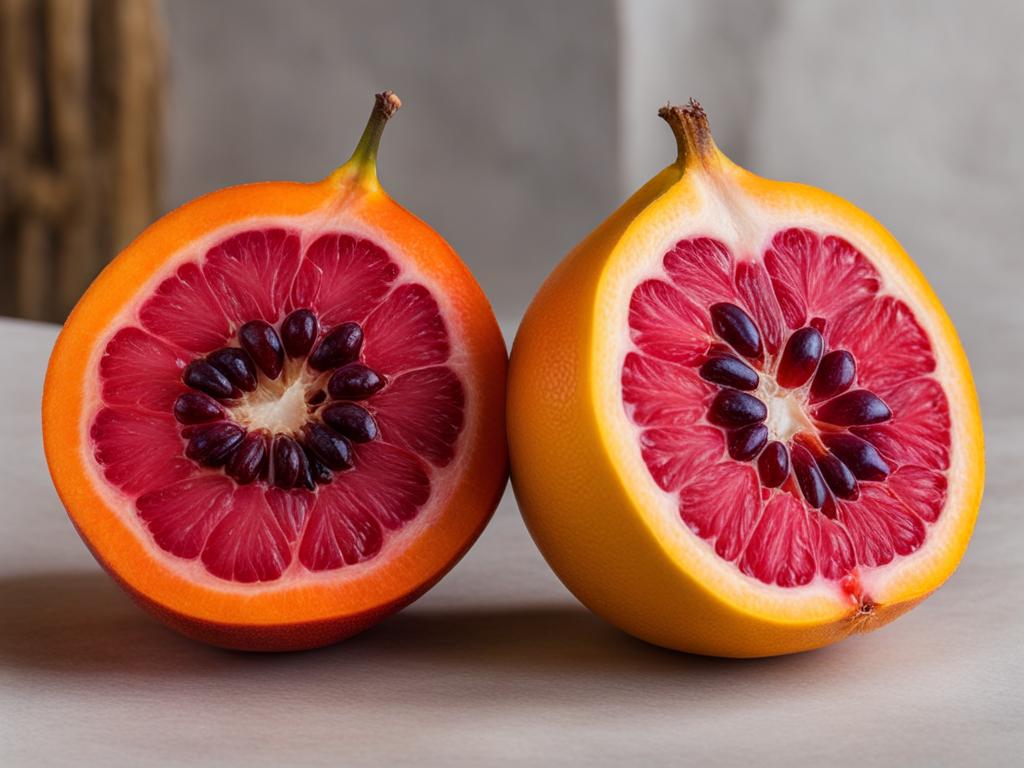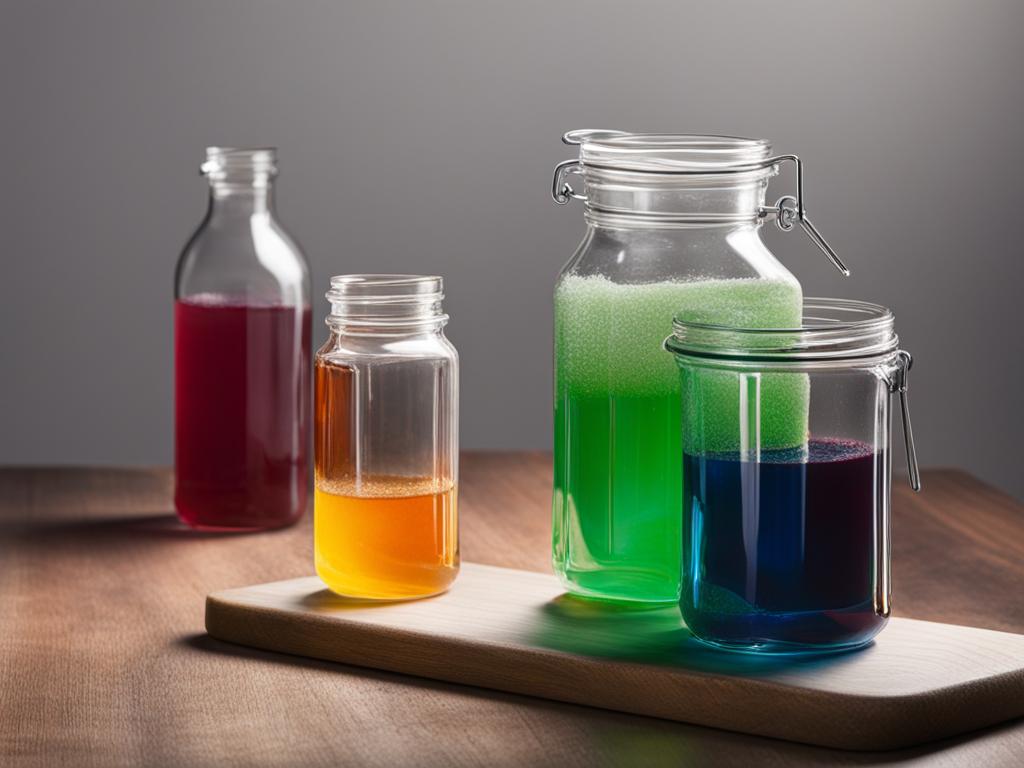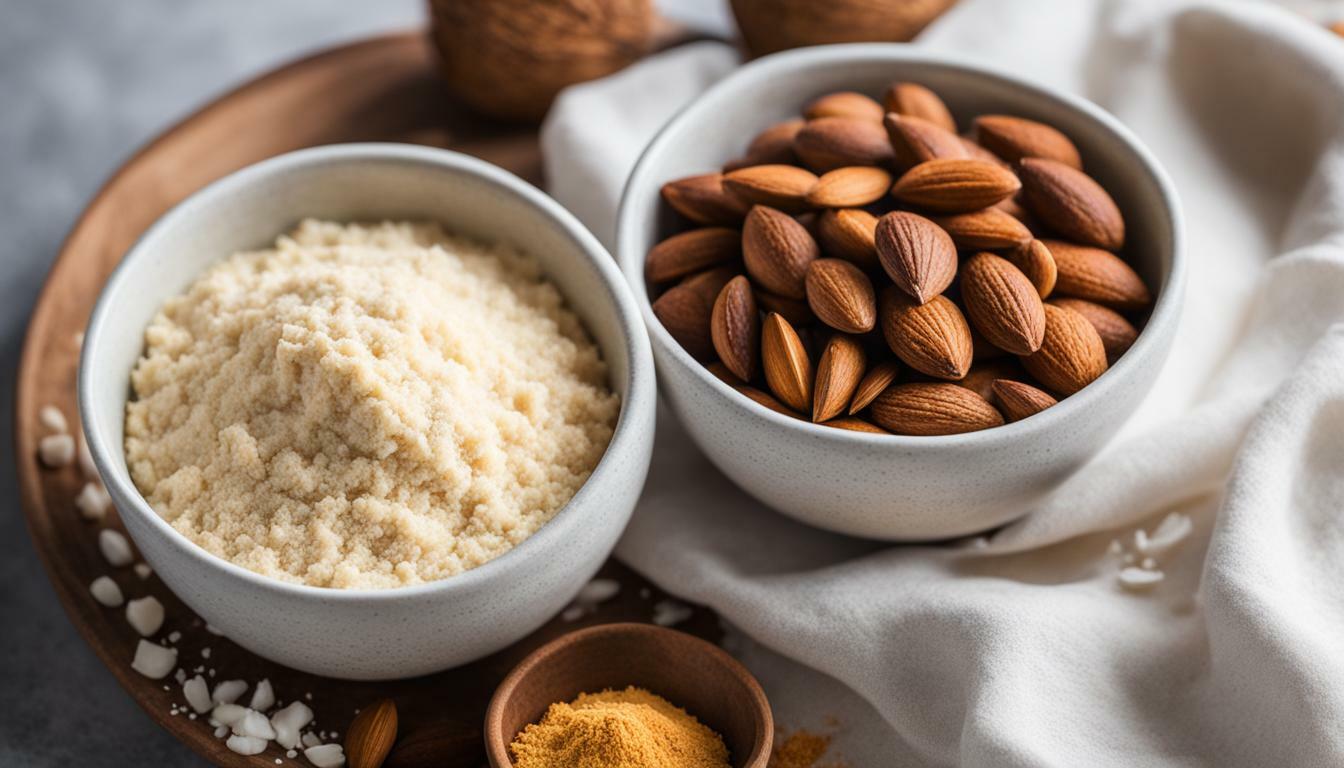When it comes to stone fruits, nectarines and peaches often get grouped together. While they may have similarities, they also have distinct differences that set them apart. In this article, we will explore the key characteristics that differentiate nectarines from peaches.
Key Takeaways:
- Nectarines have a smooth skin, while peaches have a fuzzy skin.
- Nectarines are slightly smaller than peaches.
- Nectarines have a tangy-sweet flavor profile.
- Nectarines are a genetic mutation of peaches, not a cross between peaches and plums.
Similarities Between Nectarines and Peaches
Nectarines and peaches, although having distinct differences, also share many similarities. These stone fruits belong to the same genetic family, and both offer a delightful taste and a host of nutritional benefits.
One of the primary similarities between nectarines and peaches is their classification as stone fruits. This means that their flesh surrounds a hard pit or seed, giving them a characteristic structure. Additionally, both fruits come in various varieties, including freestone and clingstone, offering different textures and levels of sweetness.
When it comes to their nutritional content, nectarines and peaches are comparable. Both fruits are rich in vitamins C and A, providing important antioxidants for overall health. They also contain fiber, which aids in digestion, along with other essential nutrients like potassium and calcium.
Despite these shared characteristics, the key distinction lies in the skin. Nectarines have a smooth skin, while peaches are known for their fuzzy exterior. This distinction gives nectarines a slightly different texture and appearance, making them visually distinct from their peach counterparts.
| Nectarines | Peaches |
|---|---|
| Smooth skin | Fuzzy skin |
| Often tangier | Milder flavor |
| Slightly smaller | Larger in size |
| Similar nutritional value | Similar nutritional value |
Overall, while nectarines and peaches have their differences, they also have many similarities. Their shared genetic family, nutritional benefits, and versatility in culinary applications make them both delicious additions to any summer menu.
Differences Between Nectarines and Peaches
While nectarines and peaches may taste similar, there are some subtle differences between these two stone fruits. One noticeable distinction is their flavor. Nectarines tend to be sweeter and tangier compared to peaches, especially the white-fleshed varieties. The tanginess of nectarines adds a delightful zing to their taste, making them a popular choice for those who prefer a slightly more vibrant and intense flavor profile.
Another difference lies in their appearance. Nectarines have a smooth skin, while peaches have a fuzzy or velvety skin. This variation in texture not only sets them apart visually but also affects the overall eating experience. Some individuals may prefer the smoothness of nectarines, while others enjoy the unique sensation of biting into a fuzzy peach.
When it comes to nutritional value, nectarines and peaches are quite similar. Both fruits are nutritious and provide beneficial vitamins and minerals. They are low in calories and a good source of dietary fiber. Additionally, both nectarines and peaches contain vitamin C and vitamin A, which contribute to a healthy immune system and support eye health. However, nectarines have slightly higher levels of vitamin A and C compared to peaches, making them an excellent choice for those seeking an extra boost of these essential nutrients.

Culinary Uses of Nectarines and Peaches
Nectarines and peaches are not only delicious fruits to eat on their own, but they also offer a wide range of culinary possibilities. Their sweet and juicy flavors can add a burst of freshness to both sweet and savory dishes. Whether you’re looking to create a refreshing salad, a wholesome smoothie, or a delectable dessert, nectarines and peaches can be versatile ingredients in your kitchen.
Sweet and Savory Salads
One popular way to incorporate nectarines and peaches into your culinary repertoire is by adding them to salads. The combination of their natural sweetness and vibrant colors can elevate any salad to a whole new level. For a refreshing twist, try pairing sliced nectarines or peaches with crisp greens, crumbled feta cheese, and a drizzle of balsamic vinaigrette. For a more savory option, create a nectarine-tomato salad by tossing together diced nectarines, juicy tomatoes, fresh basil, and a squeeze of lemon juice. The contrasting flavors and textures make for a delightful salad that is both visually appealing and delicious.
Delicious Desserts
Nectarines and peaches can be the star of many delightful desserts. From cobblers and crisps to tarts and pies, these fruits can be used in a variety of baked goods. Their natural sweetness and juiciness lend themselves well to desserts that showcase their flavors. Consider making a classic peach cobbler by combining sliced peaches with a buttery, sweet biscuit topping. Alternatively, create a rustic nectarine tart by arranging thinly sliced nectarines on a flaky pastry crust and baking until golden brown. The possibilities are endless and sure to satisfy any sweet tooth.
Refreshing Smoothies
When it comes to refreshing summer beverages, smoothies made with nectarines and peaches are a winning choice. Simply blend together ripe nectarines or peaches with your favorite yogurt or milk, a handful of ice, and a touch of honey or agave syrup for sweetness. You can also add other fruits like berries or bananas for added flavor and nutrition. The result is a cool and creamy smoothie that is not only delicious but also packed with vitamins and antioxidants.
| Culinary Uses | Recipes |
|---|---|
| Salads | Nectarine-Tomato Salad, Peach and Feta Cheese Salad |
| Desserts | Peach Cobbler, Nectarine Tart |
| Smoothies | Peach and Yogurt Smoothie, Nectarine-Berry Blend |
With their versatility and delightful flavors, nectarines and peaches are sure to bring a taste of summer to your culinary creations. So, whether you’re looking to add a pop of sweetness to a salad, whip up a delicious dessert, or enjoy a refreshing smoothie, don’t forget to include these juicy stone fruits in your next culinary adventure.
Conclusion
In conclusion, the difference between a nectarine and a peach lies in their distinct characteristics. While both fruits belong to the same genetic family and share similarities, there are key factors that set them apart.
Nectarines have a smooth skin, making them visually distinct from the fuzzy skin of peaches. Additionally, nectarines tend to have a tangier and sweeter flavor profile, especially the white-fleshed varieties. They also have a slightly firmer texture compared to peaches.
Despite their differences, both nectarines and peaches are versatile fruits that can be enjoyed in a variety of culinary applications. Whether you prefer the smooth skin of a nectarine or the fuzzy skin of a peach, these stone fruits are valued additions to summer dishes and desserts.
So, the next time you’re faced with the choice between a nectarine and a peach, consider their unique qualities and how they can enhance your culinary creations. Whether you’re slicing them into a refreshing salad, blending them into a smoothie, or baking them into a delectable cobbler, both nectarines and peaches offer a delicious taste of summer.
FAQ
Are nectarines and peaches the same fruit?
Nectarines and peaches are both stone fruits and belong to the same genetic family, but they have distinct differences. Nectarines have a smooth skin, while peaches have a fuzzy skin.
Are nectarines a cross between peaches and plums?
No, nectarines are not a cross between peaches and plums. They are a genetic mutation of peaches.
What are the similarities between nectarines and peaches?
Nectarines and peaches are both stone fruits, have similar nutritional benefits, and come in various varieties, such as freestone and clingstone. Both fruits can be either white-fleshed or yellow-fleshed and are rich in vitamins C and A.
How do nectarines and peaches differ in taste?
Nectarines tend to be sweeter and tangier compared to peaches, especially the white-fleshed varieties.
What are the culinary uses of nectarines and peaches?
Nectarines and peaches can be used interchangeably in many recipes. They can be enjoyed raw, added to salads, used in desserts like cobblers, crisps, and tarts, or blended into smoothies. Nectarines are often preferred for grilling and can be used in savory dishes like a nectarine-tomato salad.
 Skip to main content
Skip to main content


